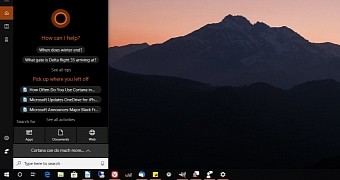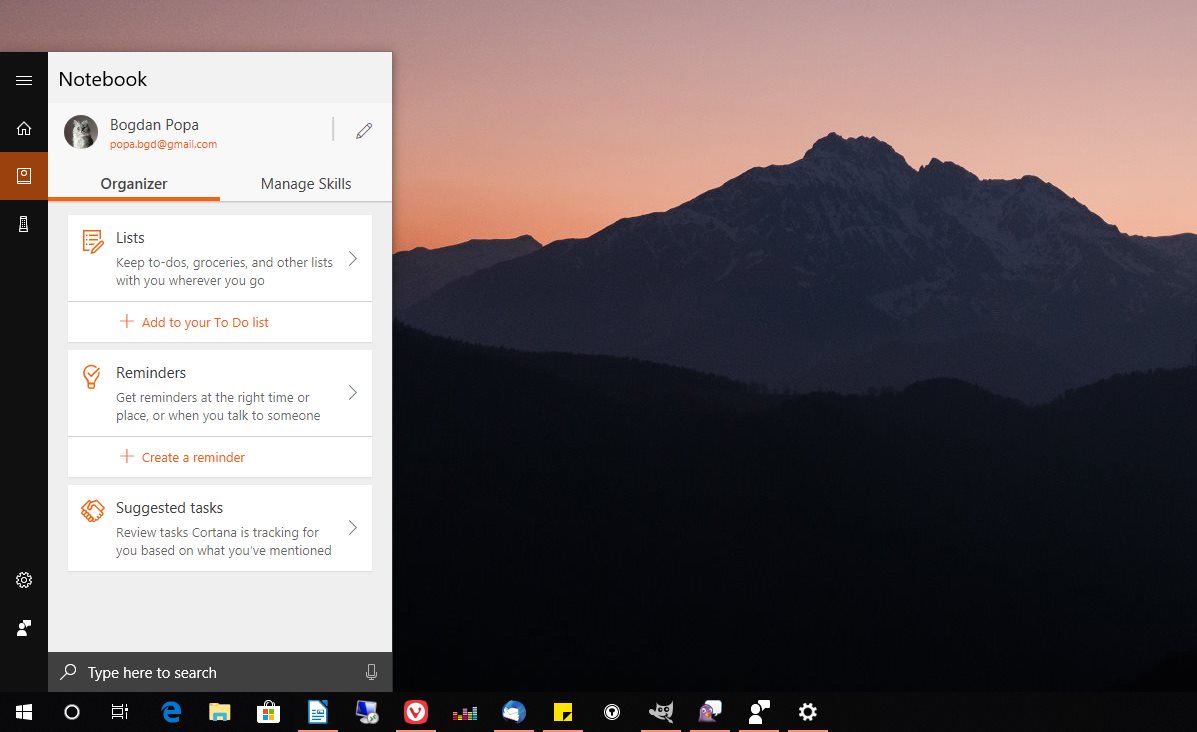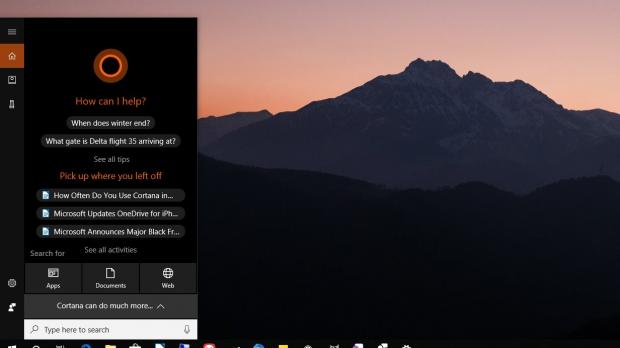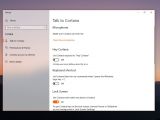Digital assistant Cortana is a key feature of Windows 10, or at least, that’s what Microsoft wants us to believe, so it receives updates every now and then to improve its capabilities.
When comparing Cortana with Google Assistant and Google’s Siri, however, the biggest setback I think that Microsoft has to deal with is the lack of a mobile platform.
With Windows 10 Mobile in maintenance mode and projected to get the ax in mid-2019, Microsoft needs to focus all of its efforts in the digital assistant business elsewhere, like desktops, tablets, and other devices like speakers.
However, as far as Windows 10 is concerned, Cortana continues to be a feature that most people might actually avoid, not necessarily because it’s not useful, but because a digital assistant on a PC doesn’t make as much as sense as Microsoft seems to believe.
Despite all the modern touches, many Windows users continue to see this operating system as a desktop platform that must be used with a mouse and keyboard. Sure, touch has evolved a lot lately and the pen is becoming a more important part of our lives, but at the same time, a vast variety of users still can’t find it convenient to perform certain activities with the help of a digital assistant.
Talking to your computer might be cool, but it’s not something that many people might be doing on a regular basis. A thread on reddit that I came across recently proves I’m not the only one thinking that Cortana isn’t actually the most successful Windows 10 feature released so far.
And by the looks of things, the pace at which Microsoft improves Cortana may suggest that the software giant more or less surrendered to Google and Apple in this field. Someone in the linked discussion says this is something that looks a lot like the Windows Phone approach, though I think that Microsoft has put a lot more effort into getting Cortana right than into its mobile platform.
However, there’s no doubt the software giant could have done a lot more to make Cortana a more widely used digital assistant. Cortana continues to be available in a handful of countries, and this obviously impacts its adoption across the world. At the same time, new capabilities are added at a rather slow pace, and they typically land with the release of new OS feature updates.
Microsoft also seems to be willing to make Cortana second-class citizen of Windows 10, and rumor has it that future updates would make the digital assistant less visible on the desktop.
One such change could be separating Cortana from the Windows Search, basically moving the assistant elsewhere. It’s no secret that many users actually unpin its icon from the taskbar and some even forget it exists, and by separating it from search, Microsoft only does the right thing.
Back in 2017, people familiar with the matter said Microsoft was even considering moving Cortana to the system tray, pretty much for the same reason. Most users removed it from the taskbar because they rarely launched it and its icon only ate up space on the desktop.
If there’s anything good about Cortana it’s the role it plays in the accessibility side of the operating system. The digital assistant can also guide you throughout the Windows 10 setting up experience, providing you with the information you may need to correctly configure your computer.
But in the end, there’s no doubt this isn’t enough for the typical Windows 10 user, so Cortana may eventually end up disabled anyway.
Do you ever use Cortana? If yes, how do you do it? Is there any feature you’d like to see in Cortana? Let us know in the box after the article.

 14 DAY TRIAL //
14 DAY TRIAL // 



